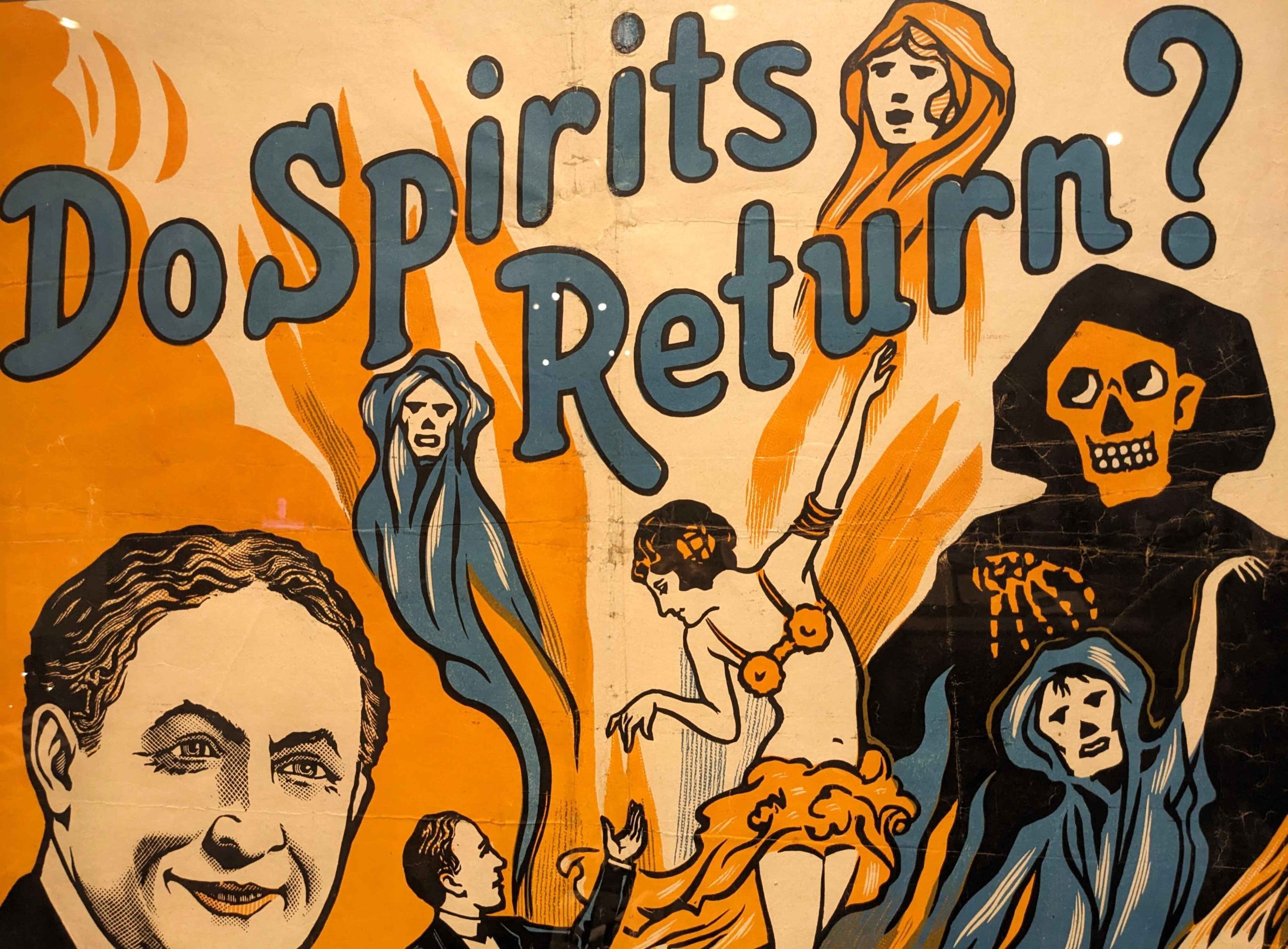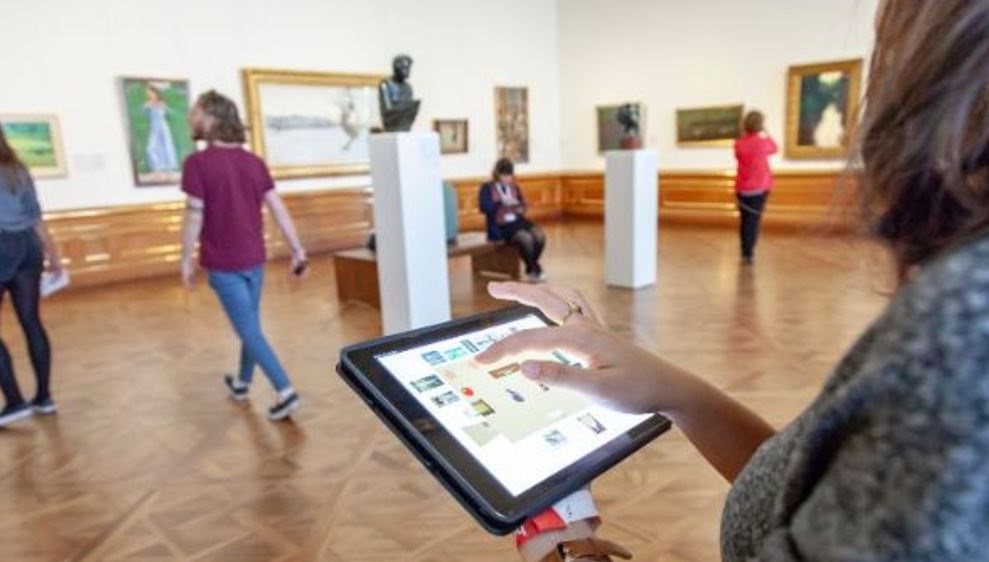As the museum field increasingly focuses on accountability and community, evaluation – or the use of quantitative and qualitative data to drive decisions – has become more and more important. By asking the right questions and using the right tools, evaluation can empower boards, staff, and visitors to better understand and meet the needs of a museum’s community. But how does a museum generate all of this juicy data? Look no further than the unsung hero of museum evaluation, the lowly data collector.
For six months I worked as a data collector contractor at the MIT Museum in Cambridge, MA, gathering visitor information through surveys and observations. While conducting surveys, I talked with locals and international visitors, guests who identified themselves as educators, artists, scientists, and engineers, MIT alumni, prospective students, grandparents, kids, and everyone in between. Despite feeling like a carnival barker as I solicited surveys from any passersby within earshot, many people were receptive, and even eager, to talk about their experiences in the museum. Though every encounter followed the same scripted survey, each visitor offered a unique perspective. Some volunteered details beyond the scripted questions on engagement with interactives and thoughts about the museum and exhibits, remarking how their museum visit touched their emotions, hopes, and dreams. Many visitors shared personal reactions to art and artifacts in the galleries, from kinetic sculptures to NASA computers, while others felt inspired in their STEM studies or hoped that the technology on display would change the future for the better.
While surveys provided fruitful data and emotional stories, I preferred timing and tracking observations due to my love for people watching. Timing and tracking observations are a museum evaluation technique that involves observing a visitor around the museum and collecting data on what they interact with, how they interact with it, and for how long. In this evaluation study, it was important to remain discreet during observations because any disruption to a visitor’s experience in the museum could potentially alter their visit. Two small signs posted at the museum entrance and second floor landing disclosed the study to the public, but otherwise I tried to seem like any other visitor blending into the crowd.
It was often challenging to balance my data collection responsibilities while remaining incognito – for example, visitors with young kids can be particularly difficult to observe because children are constantly on the move, and so are their caretakers! During an observation of a family with young children, you might spot me hurriedly trailing the group and furiously scribbling in my notes while trying to feign calm and disinterest. Although there were plenty of both frantic and mundane moments during observations, some of the museum interactions I observed were an absolute delight: adults facilitating science exhibits and activities for children, a couple on a date holding hands and discussing art, a group of friends involved in a half hour-long discussion sparked by an exhibit. I was heartened to see tweens and teens exploring the museum on their own, becoming engrossed in interactive science exhibits, and even helping younger unrelated kids with activities. After self-driven exploration of the museum, adolescent visitors would meet up with their families and excitedly recount what they learned and experienced. In moments like these, my work as a museum evaluation data collector connected directly with my classroom learning in the Tufts Museum Education program. Visitors that I observed and surveyed at the MIT Museum exhibited characteristics described by free-choice learning scholar John Falk in his research on museum visitor identities: I witnessed teens acting as Explorers, caretakers as Facilitators, scientists and engineers as Professionals/Hobbyists, and tourists as Experience Seekers.1
Despite the many positive interactions I had, one experience reminded me that our research in the museum does not exist in a vacuum. Data collection for this type of museum evaluation requires random selection of visitors to study without regard to their race, gender, ability, age (excluding children), and other identifying factors. During one timing and tracking observation, I randomly selected a Black visitor according to the study protocol and began following her and her group. Although it was my job to remain covert while following a visitor throughout the museum and recording their behaviors, the role also requires focused attention on one person often for hours at a time – the demands for discretion and high attention to detail were difficult and sometimes impossible to balance. I observed this visitor in the museum for several hours with no indication that she or her group were aware of my presence, only to learn the next day that the visitor had been aware of me and had felt uncomfortable and racially profiled. I felt awful. While my work in evaluation was meant to support the movement towards a more welcoming and engaging museum, my behavior had caused visitors to feel unwelcome and targeted. The managers of the evaluation study took immediate action to improve the protocol to prevent future instances of visitor discomfort, but I was left feeling that any kind of timing and tracking observation without explicit consent might run the risk of alienating visitors.
Now that my work with the study has concluded, what are my main takeaways as a former museum evaluation data collector? Firstly, trust your front-facing museum staff – the staff members at the MIT Museum were already aware of some of the issues and guest suggestions uncovered during the study from their time on the museum floor engaging with the public. Second, be willing to adjust your approach as you learn and grow – your initial protocol is based on your best assumptions and the practical application of the protocol can and should shape your understanding of those assumptions. Lastly, know that evaluation work will impact the museum guest experience regardless of how hard you try to mitigate or eliminate its influence. It can be helpful to identify how a study may affect guests beforehand and address these issues proactively.
Overall, my experience working on an evaluation study reinforced the material I’ve been learning in the Museum Education program at Tufts while giving me the first-hand opportunity to observe and appreciate the many ways that visitors physically, intellectually, and emotionally interact with museums.
Citations:
1 Falk, John H. Identity and the Museum Visitor Experience. 1st ed. London, UK: Routledge, 2016.




